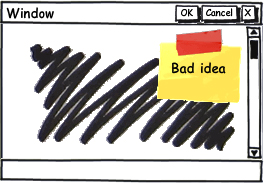Semiotic engineering: how, when, and why to use this interactive

Nevertheless, semiotics can provide be a valuable approach in analyzing the characteristics and attributes of icons, pictograms and infographics, as the nice and comprehensive overview by Ansgar Vollmer makes clear.
In the latest chapter of the Encyclopedia of Human-Computer Interaction, Clarisse Sieckenius de Souza goes one step further. Semiotics not only helps us analyzing signs, it can also teach us how to create better computer programs. Semiotic engineering is a software design strategy that considers computers to be media instead of machines. It underlines the importance of metacommunication, “communication about how, when, where and why to communicate with computer systems.” Translated to interactive infographics, semiotic engineering could be interpreted as another strong advocate for the importance of guidance, annotation and explanation. In the words of Sieckenius de Souza:
Since designers cannot be personally present when a user interacts with software, they have to represent themselves in the interface, using a specifically designed signification system, and subsequently tell the users what the software does, how it can be used, why, and so on.